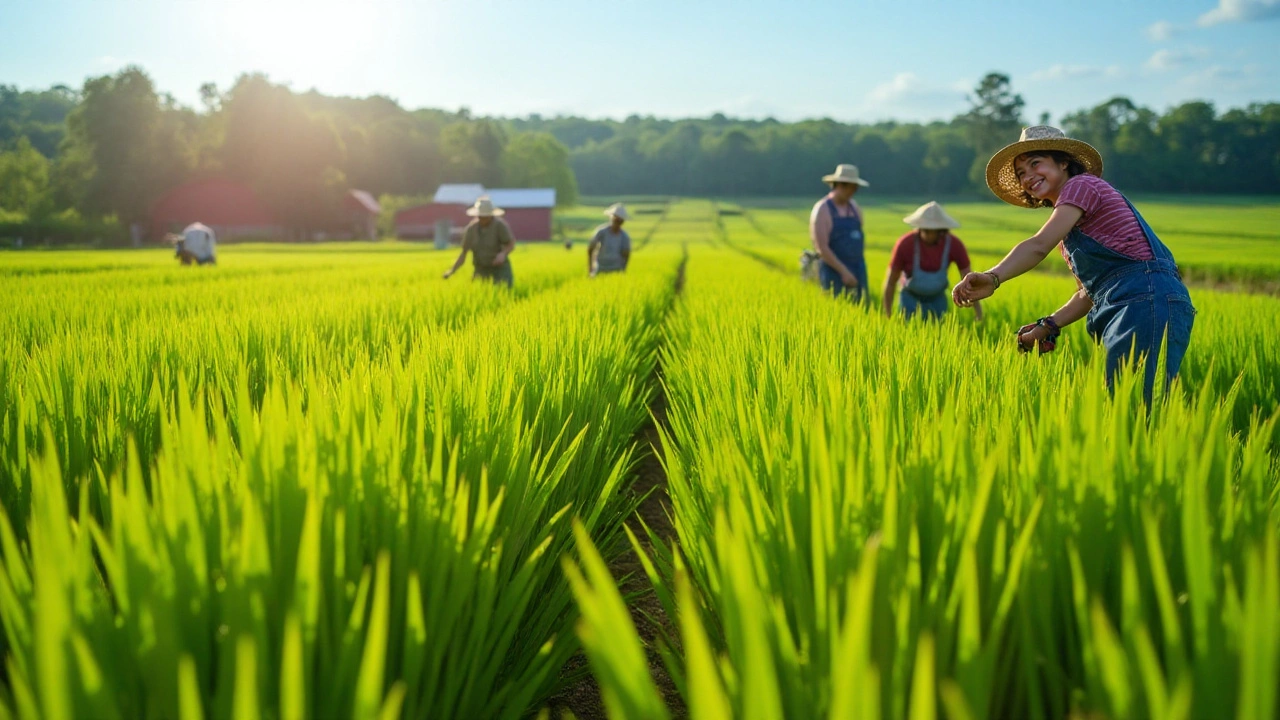American Rice – Everything You Need to Know
When talking about American rice, the rice grown across the United States for food, feed, and export. Also known as U.S. rice, it forms a distinct slice of the global grain picture. The same paragraph introduces rice cultivation, the set of practices used to grow rice in fields or paddies, the US rice market, the domestic and export trade network for American-grown rice, and the range of rice varieties, different grain types like long‑grain, medium‑grain, and specialty lines cultivated in the U.S.. American rice isn’t just a crop; it’s a blend of climate, technology, and consumer demand that shapes everything from farm equipment to dinner plates.
Why American Rice Matters
American rice encompasses multiple varieties, each with its own grain length, cooking texture, and market niche. Long‑grain varieties dominate Southern states, while medium‑grain and aromatic types find homes in California’s Central Valley. Production requires precise water‑management, often using flood‑controlled fields that recycle water to cut costs and protect the environment. The US rice market influences global prices because the United States ranks among the top exporters of both raw grain and processed rice products. At the same time, international demand pushes growers to adopt newer seeds and sustainable practices. These three elements—varieties, cultivation methods, and market dynamics—form a triangle that drives the industry forward.
When you look at the numbers, the U.S. harvest typically exceeds 10 million metric tons each year, with Arkansas alone contributing around 30 percent of that total. This scale means that any shift in rice cultivation techniques—like drip irrigation or low‑land rice systems—carries weight across the supply chain. Farmers increasingly rely on precision agriculture tools: satellite imagery to monitor field health, soil‑moisture sensors to fine‑tune flooding schedules, and genetics labs to develop disease‑resistant strains. The result is a crop that not only meets domestic grain‑food needs but also competes in global markets for quality and price.
Consumers often don’t realize how diverse rice varieties can be. A single kilogram of long‑grain American rice might serve a family’s weekly side dishes, while a specialty aromatic variety from California's Gulf Coast can command premium prices in gourmet restaurants. These differences affect everything from cooking instructions to storage recommendations. For exporters, understanding which variety aligns with a target market’s palate is crucial—Asian buyers may favor certain fragrant lines, whereas Middle‑Eastern partners might seek high‑yield, low‑cost grains. That alignment is why the US rice market is a complex web of contracts, quality certifications, and logistics networks.
All these pieces—varieties, cultivation, and market forces—create a rich backdrop for the articles you’ll find below. Whether you’re curious about the history of rice in America, want to compare the top‑producing states, or need tips on sustainable farming techniques, this collection has you covered. Dive in to see how American rice shapes meals, economies, and innovation across the country.
Growing Rice in America: Possibilities and Practices
Rice, a staple around the world, can indeed be cultivated in various parts of America. While traditionally associated with countries like China and India, the United States also has regions with optimal conditions for rice farming. This article delves into the specifics of where and how rice can be grown in America, the best practices to follow, and the challenges farmers might face. With significant advancements in agricultural techniques, growing rice is both viable and profitable.
- manufacturing
- India
- food processing
- garden tips
- rice cultivation
- government schemes
- balcony garden
- urban gardening
- balcony gardening
- profitable business
- business ideas
- plastic manufacturing
- drip irrigation
- plant care
- steel manufacturing
- sustainable gardening
- startup ideas
- steel industry
- flower gardening
- textile manufacturers






